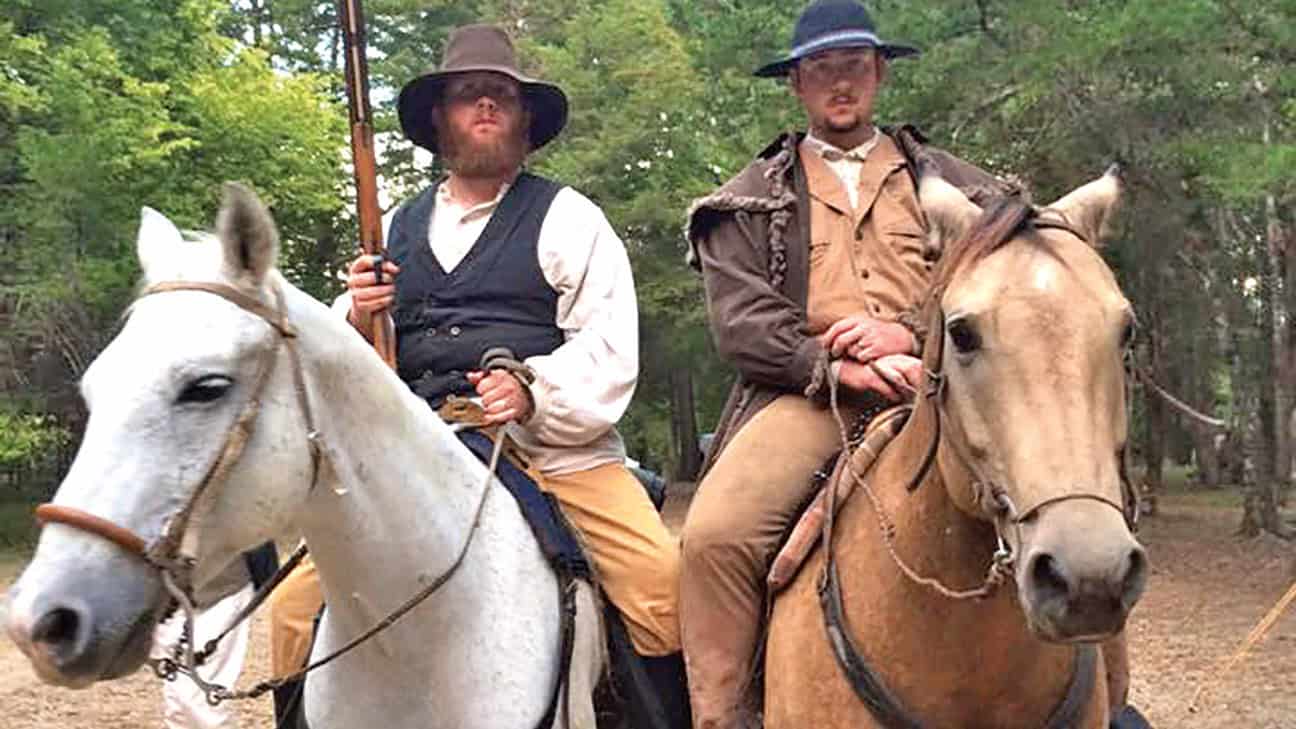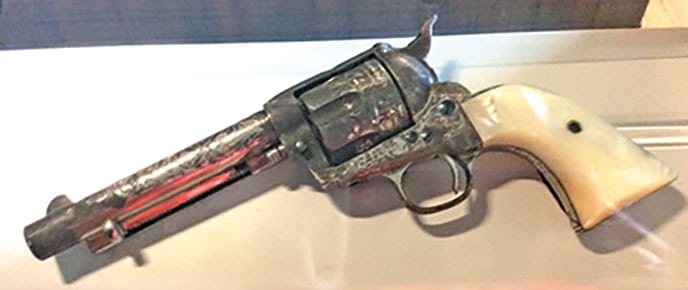
Nick Wallace and Garrett Mussett are dressed as Choctaw Lighthorsemen from the 1840s.
The Gear and Daily Life of the Choctaw Lighthorsemen
Iti FabvssaPublished January 1, 2017The Choctaw Lighthorse was established shortly after the Treaty of Doak’s Stand to keep the peace, and uphold laws within the Choctaw Nation.
One of the largest threats to the Choctaw Nation was whiskey or Oka homi (Choctaw for Spicy Water).
Whiskey laws in the Choctaw Nation were strict. If one was caught running whiskey within the Nation, they would be punished by 100 lashes on the offender’s bare back.
These lashes were given by a Lighthorseman who would use a hickory switch no bigger than a half inch in circumference and no longer than 30 inches.
Giving lashings was the most common used method for punishment within the Nation. These lashes would be issued until the subject fainted, or the number of lashes were completed.
However, if the subject fainted during lashing, the Lighthorseman would stop and tell the subject to return at a later date to finish receiving their punishment. These lashings would often take place near the court grounds at the whipping post.

A Lighthorseman of the Nation was the sole judge, jury, and executioner. These men were the ultimate law enforcement authorities of their time.
They were highly respected in the communities and were elected by the community to serve as Lighthorsemen.
The power of being the judge and jury would change with time by the 1850s. There were approximately 18 Lighthorsemen who served the Nation; six for each of the three districts, Apukshunnubbee, Moshulatubbee and Pushmataha.
Though these numbers seem small, the Lighthorsemen also had the power to deputize men to aid them in their duties.
The daily life of the Lighthorsemen was spent in the saddle patrolling the Nation, protecting the citizens, and settling disputes.
A typical patrol on horseback would last for three days, or a week at a time.

Their saddles would be a Hope Style saddle. These saddles were popular during the 1840s to 1880s.
The gear they carried on horseback would likely be a set of saddle bags, feed bag, bed roll, rifle, hand shackles, canteen, picket rope, and lasso.
The saddle bags contained food, pencil, paper, feed for the horse, something to cook with, flint and steel to make a fire with, and tools to take care of their horse’s hooves.
The weapons used by the Lighthorsemen would change with the times and were self-supplied.
The first type of rifles and pistols used by the Lighthorsemen were flintlock styles used in the 1820s-1850s. The most commonly used musket would have been a Fowler type. A Fowler was a smooth bore gun often in a 20 gauge. The pistol would have been a single shot Kentucky style pistol often in 45 caliber.
During the 1860s, the Lighthorsemen firearms would change from flintlocks to a percussion style. The rifles would have changed to a percussion mechanism though there were many types of rifle, Kentucky style could have been the most commonly used during this time and the sidearm would have been percussion style revolver.
They also would have possibly carried a muzzling double barrel shotgun, often in 10 gauge.
As times changed, the Lighthorsemen weapons adapted to these changes.
With the invention of metal cartridges during the 1870s, or what we know today as the modern day bullet, came rifles that could hold more than one round and be reloaded much quicker such as the 1873 Winchester.
Sidearms would have been black powder revolvers converted to take the metal cartridges and the 1873 Colt in .45 Long Colt caliber.
The Lighthorsemen would have tried to carry a rifle in the same caliber as their sidearm. Other weapons they would have carried throughout these would have been, belt knife, pocket knife and possibly a tomahawk.
The clothing the Lighthorsemen would have worn would have changed over time just like fashions change today.
During the 1830s-1850s, we currently don’t know what kind of clothing would have been worn by the Lighthorsemen.
During the 1870s, the clothing would have been, black or brown slouch hat or flat brim hat for headgear. Shirts would have been a homespun shirt with roll over collar with four buttons near the collar. They would have worn a vest over their shirt. Also depending on the weather, they would have worn a frock coat.
The pants would have been saddle pants in an earthen color. Shoes would have been stove pipe or Mule Ear style boots.
Other clothing would be a gun belt, regular belt, tie, and a bandanna.
Currently, there are no records of the Lighthorsemen wearing badges during this time, but they would wear a red ribbon in their hats.
These men of the Lighthorse were brave, tough and well respected. The Lighthorse officers are legends in their own time and did a great deal of work to keep our Nation safe.
If you are descended from a Lighthorsemen or know any stories of the Choctaw Lighthorse and want to share, please let us know.